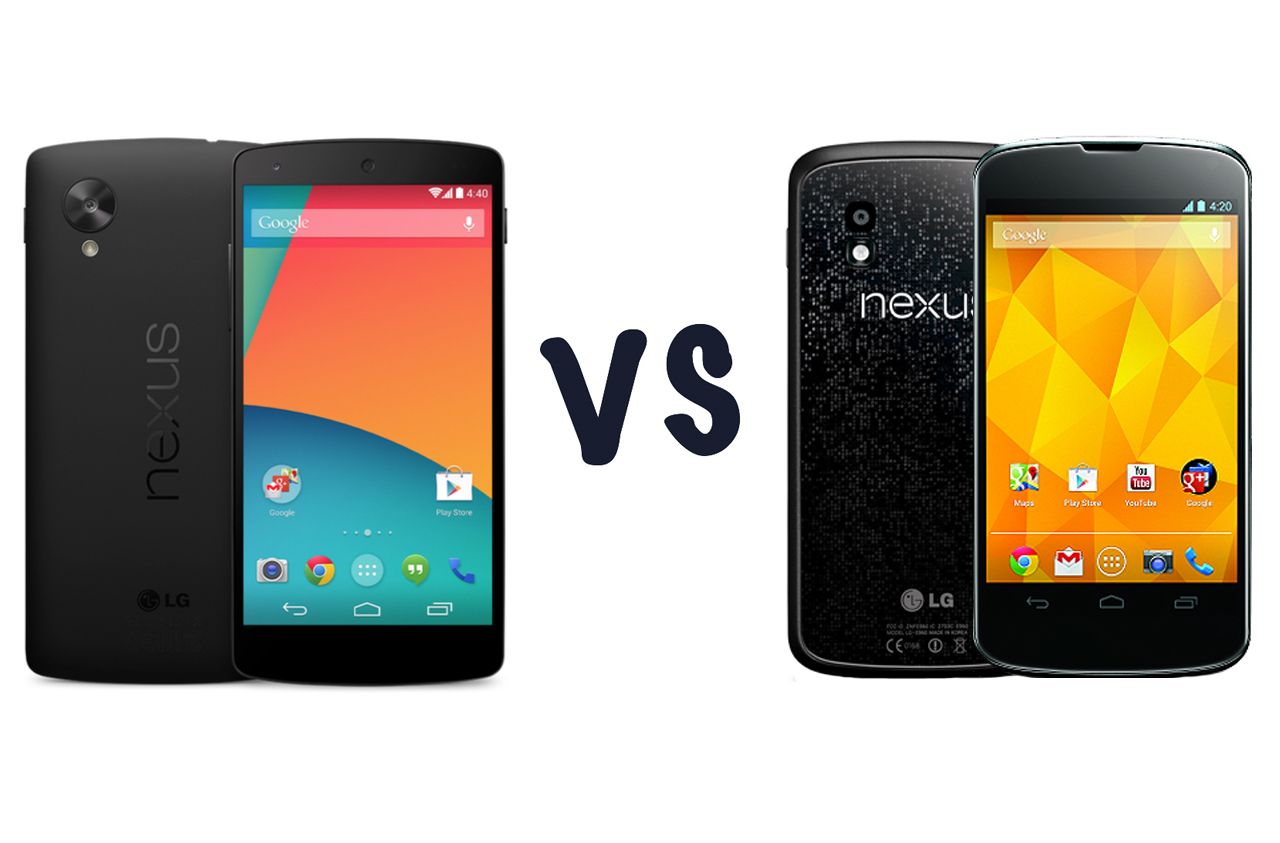The Google Nexus 5 has been announced officially after months of rumours and speculation, bringing the purest of Android experiences in a hot, new hardware refresh.
We've crunched through the official specs of the Nexus 5 and run a comparison with the Nexus 4, to see exactly what the differences are and whether it will be worth your racing out the door to pick one up on launch day.
The manufacturer stays the same
In the past, Nexus devices have been made by several manufacturers including HTC, Samsung, LG and Asus, but the Nexus 5 sticks with the Nexus 4's maker, LG.
LG launched its flagship LG G2 smartphone earlier this year and many rumours suggested the Nexus 5 would take a number of the LG G2 specs with it, which seems to be the case.
The display is bigger and better on the Nexus 5
The Nexus 5 screen comes in at 5-inches with an IPS LCD display and a resolution of 1920 x 1080, giving it a pixel density of 445ppi. The Nexus 4 also had an IPS LCD display, but was slightly smaller at 4.7-inches and with a lower resolution of 1280 x 768 pixels, 320ppi. Although we liked the Nexus 4 display, producing vibrant colours was its biggest weakness.
The increased resolution means the screen will be sharper on the Nexus 5, and the images more detailed, compared to the Nexus 4.
The Nexus 5 has larger dimensions
As you would expect, the Nexus 5 has increased in size slightly to accommodate the larger display, although it's not by much. The Nexus 4 measures 133.9 x 68.7 x 9.1mm and weighs 139g, compared to the Nexus 5 which comes in at 137.84 x 69.17 x 8.59 mm and hits the scales at 130g.
In terms of aesthetics, the Nexus logo has shifted from the horizontal top positioning on the Nexus 4 to a vertical middle position on the Nexus 5, plus it has increased in size too so everyone will know you have a Nexus device. LG has also moved away from the glitzy glass shell of the Nexus 4 and moved to a more classic, matte black finish on the Nexus 5.
The camera has also become more predominant on the Nexus 5, changing from the subdued square on the Nexus 4 to the larger circle surround on the Nexus 5.
Better shots on the Nexus 5
In the past the camera has often been a relative weakness of the Nexus devices, with Google using the Nexus device to push Android features rather than claims of a high quality camera, but the camera has been improved for the Nexus 5.
The sensor is the same as the Nexus 4 with the rear and front cameras offering 8-megapixels and 1.3-megapixels, respectively. However, the Nexus 5 comes with optical image stabilisation, which we suspect is the same stabilisation system used in the LG G2.
The Nexus 5 camera is now equipped with Photo Sphere for knitted 360-degree shots, HDR+ which takes burst shots and automatically chooses the best, and Auto Awesome which appears to improve photos in your library to share - much like Google+ does.
The Nexus 5 is faster and last a bit longer
The Nexus 5 comes with Qualcomm's latest chipset under its hood, the quad-core 2.3GHz Snapdragon 800 found in the latest devices including the Samsung Galaxy Note 3, LG G2 and Sony Xperia Z1. It also comes with 2GB of RAM, and in 16GB or 32GB storage options with no microSD expansion just like all the other Nexus devices.
You'll see a big improvement in speed with the Nexus 5 as it upgrades from the Nexus 4's 1.5GHz Qualcomm Snapdragon S4 Pro chip. The RAM stays the same at 2GB, but the internal storage capabilities have improved from the 8GB and 16GB models found on the Nexus 4.
In addition, the Nexus 5 will also last longer than the Nexus 4, but only just. The Nexus 4 came with a 2100mAh battery, which provided up to 10 hours of talk time and up to 250 hours of standby time, compared to the Nexus 5 which has a 2300mAh battery promising 17 hours' talk time and 300 hours standby time. The battery still looks to be a weakness in this Nexus.
Nexus 5 brings LTE
One of the notable exclusions from the Nexus 4 was LTE support, and as expected, the Nexus 5 comes packing it in. Not much else changes on the connectivity side, however.
Just like the Nexus 4, the Nexus 5 brings with it wireless charging compatibility, along with Bluetooth, Wi-Fi and NFC support so you won't notice too much change in this department, except for the fast browsing speeds, depending on your contract.
Android 4.4 KitKat brings a host of features
Perhaps the most obvious difference between the Nexus 4 and the Nexus 5 is the software, which goes without saying really. The Nexus 4 ran on stock Android Jelly Bean and the Nexus 5 is the first device to come with Google's new operating system, Android 4.4 KitKat. That said, the point of buying a Nexus device is to be first in line at Android update time, so we'd expect to see KitKit on the Nexus 4 very soon.
The new software brings with it a host of features including more attention to the camera, native printing from Android and options to control your call plan straight from the operating system. Check out Pocket-lint's KitKat coverage for a full breakdown of everything new in Android 4.4.
Read: What's new in Android 4.4 KitKat?
The Nexus 5 is more expensive
The Nexus 5 will cost you more than the Nexus 4 did, with the 16GB priced at £295 on Google Play, compared to the 16GB Nexus 4 which cost £199.
But you do get LTE support, a better battery, faster processor and the latest Android OS for that price bump so we don't think it is too bad.

